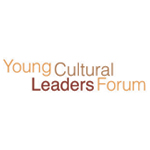 Editor’s Note: This is one of a series of posts from guest bloggers discussing topics from this week’s Salzburg Global Forum for Young Cultural Leaders. Leaders from around the world are coming together to discuss issues that are critically important to the cultural sector − how do we create and articulate our value, what is global and what is local today and what is the role of arts organizations in society.
Editor’s Note: This is one of a series of posts from guest bloggers discussing topics from this week’s Salzburg Global Forum for Young Cultural Leaders. Leaders from around the world are coming together to discuss issues that are critically important to the cultural sector − how do we create and articulate our value, what is global and what is local today and what is the role of arts organizations in society.
The changing nature of communication in the world has impacted the way people speak to each other and search for information. New technologies have made interacting easier and more immediate than ever before. As social networking becomes a necessity for people to communicate effectively, arts organizations must utilize social media platforms to increase their accessibility. New technologies and social media platforms can provide new ways to create participatory programming or projects. Arts organizations can also crowdsource their audiences to engage them in an active role. Museums have utilized crowdsourcing to harness the power of their audiences to gain information or to include the audience in the process of exhibitions. For example, the Plains Art Museum’s exhibition You Like This: A Democratic Approach to the Museum Collection, reached out to their audience to curate objects for this exhibition. This was a great way for the Plains Art Museum to encourage audience participation with their collection. Other arts organizations can learn from crowdsourcing examples and encourage their community to be more participatory.
Another example of a unique participatory opportunity is the Uforge Gallery in Boston, Massachusetts. The Uforge Gallery has monthly assignments inspiring artwork from artists. Unlike most galleries, artwork submitted for each show is non-juried, regardless of experience, technique or material. For the young and inexperienced artists, this is a wonderful opportunity to connect with an emerging arts culture and have feedback by experienced artists. The Uforge Gallery has created a close-knit community of artists who welcomes everyone.
As resources diminish, arts organizations can identify as educational resources for their communities and visitors. Teachers can bring their students to arts organizations to expose them to topics being learned in school. Teachers can also reach out to these institutions to develop lesson plans leading up to a future visit. Arts organizations can provide educational resources for adults by having lectures or presentations on their research or material. For example, science museums host lectures and presentations on scientific discoveries and theories. By bringing current news and information into the organization, there is a better chance of them staying current, relevant, and an integral part of the educational system.
To reach their community, arts organizations need to determine whom their audience is, how they want to reach their audience, and how to make their current programming participatory. These are necessary parameters to grasp the scope of audience and community. Arts organizations can study their audience demographics and survey them to see what type of art events they attend. Some arts organizations have reached out to media consultants to help them cultivate new audiences and maintain current ones.
The arts are an essential part of the community’s identity. They tell the community’s stories and bring new experiences to the community. Oral history can be used by arts organizations to access previously unexplored stories in the community. By developing these stories and integrating them in programming, the community can better relate to the arts organizations. Not only do they provide a voice for their community, they also deal with global news, ideas, and issues in a creative way. They are hubs for communities to learn and experience new ideas.
As arts organizations change how they interact and connect with their communities, they will be faced with several defining moments. These moments will define what they become in the future and how they sustain their relationships with their communities. Becoming a hub for educational resource and participatory programming will encourage community growth and sustainability.

Leave a Reply